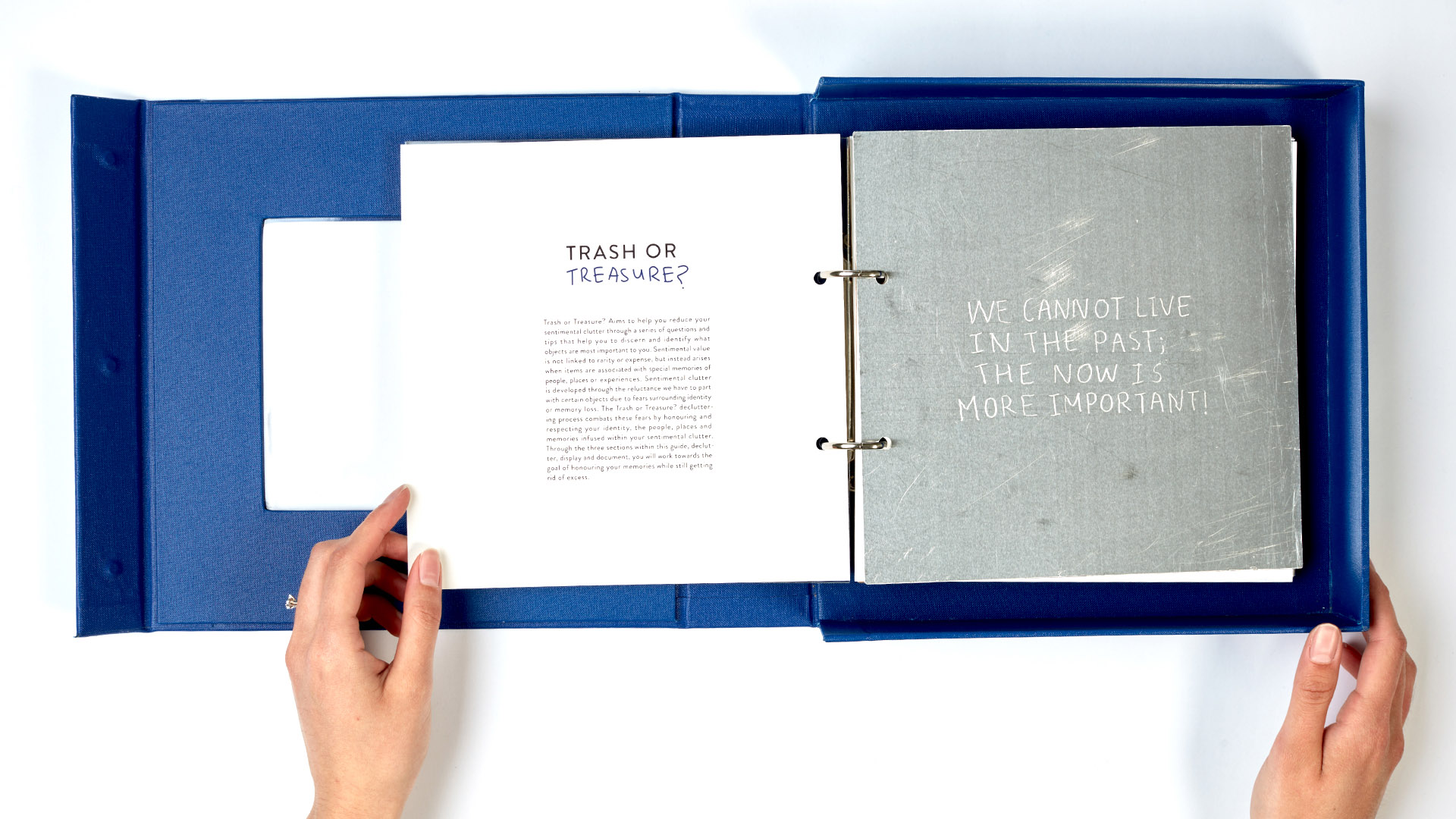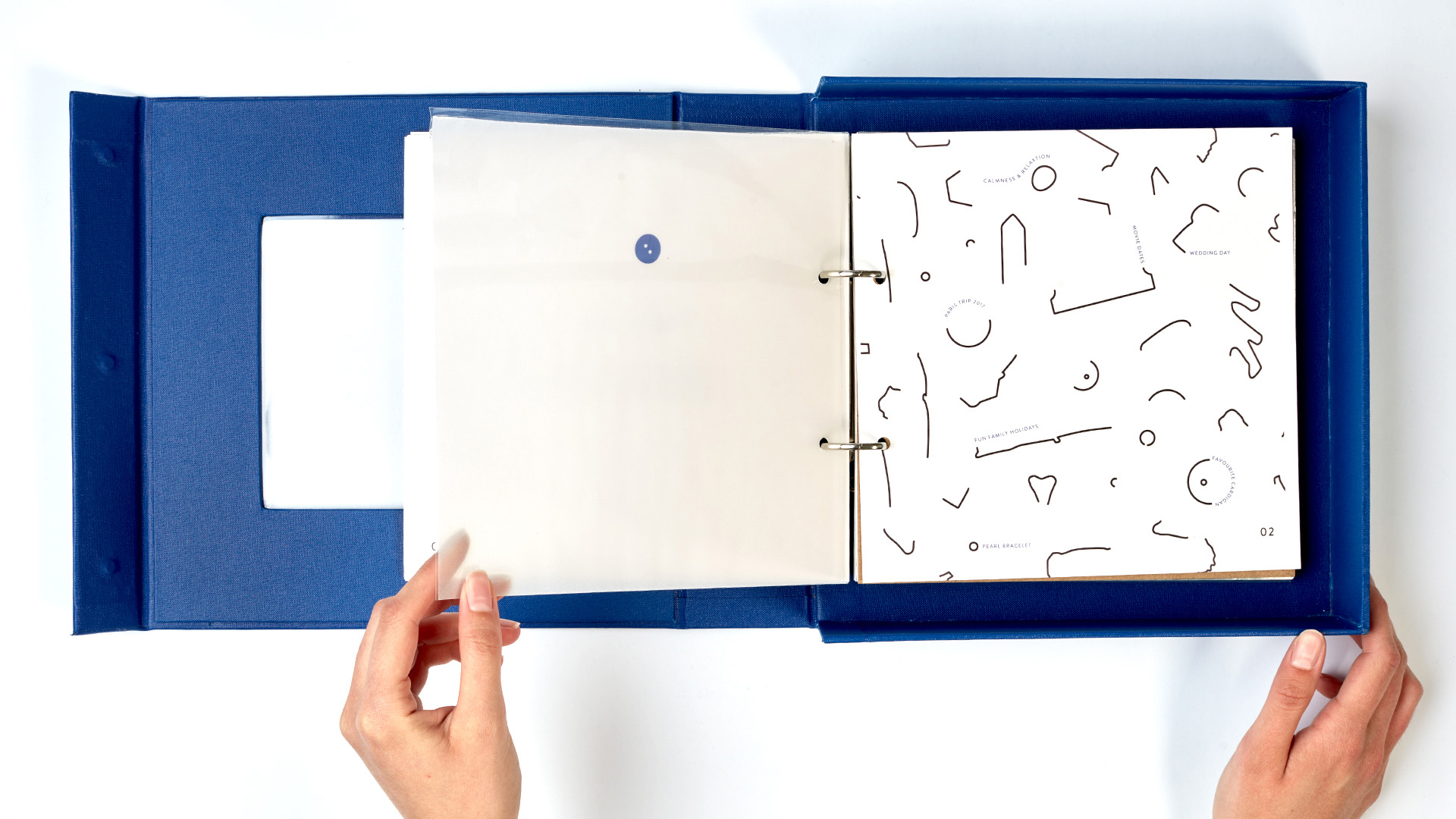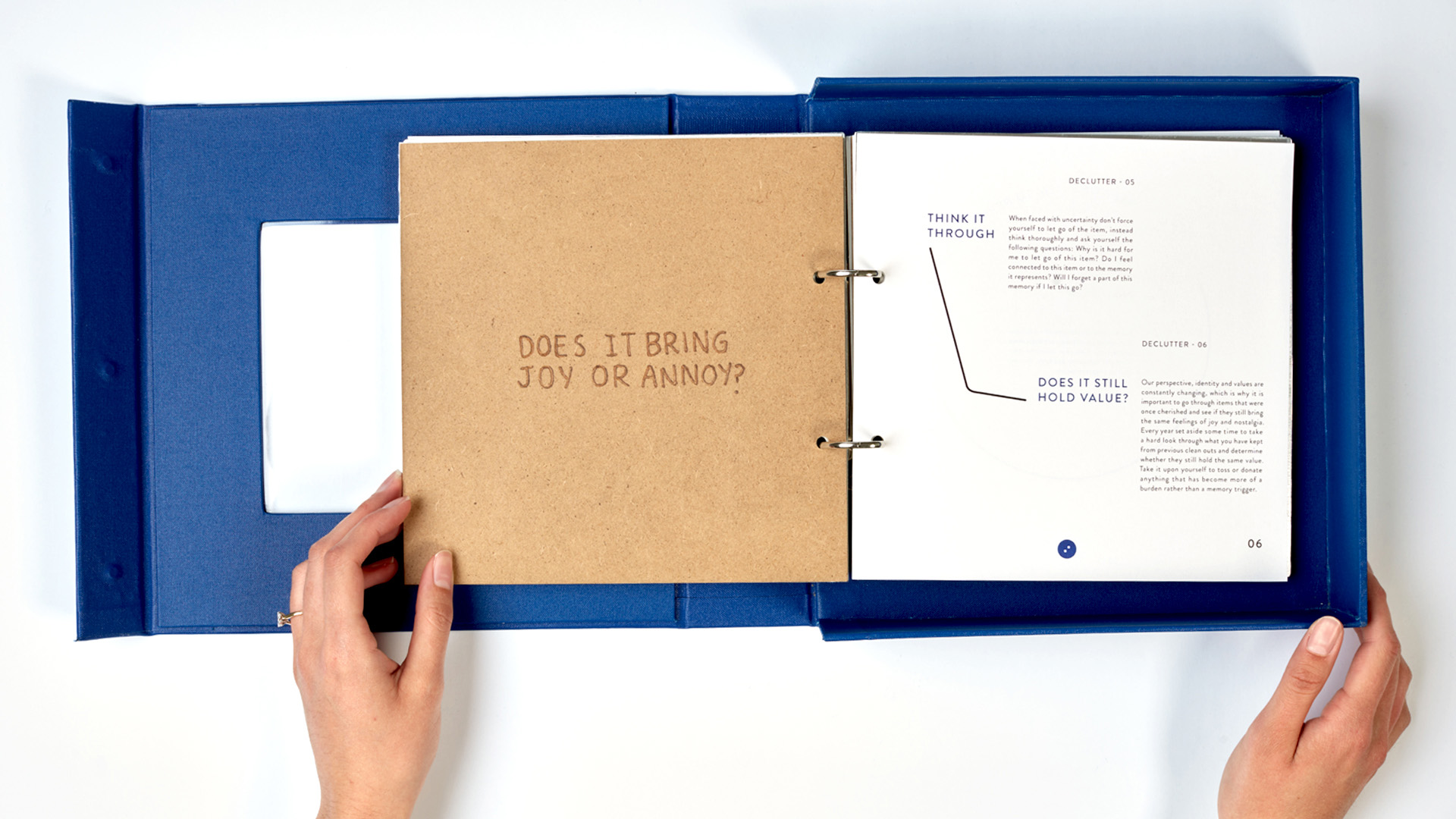

Jenna Dullabh
Trash or Treasure?
https://jennadullabhgrad702-50.tumblr.com
A Guide to Decluttering Sentimental Clutter
Trash or Treasure? Aims to relieve sentimental clutter through a series of questions and tips that help you to discern what objects are of the most importance. Sentimental value is not linked to rarity or expense, but instead arises when associated with special memories of people, places or experiences. Sentimental clutter is developed through the reluctance we have to part with certain objects due to fears surrounding identity or memory loss. The decluttering process within this guide combats these fears by honouring and respecting your identity, the people, places and memories infused within your sentimental clutter. Through the three sections within this guide, discard, display and document, you can work towards honouring your memories while still getting rid of excess.
This project explores the connection we feel towards sentimental objects and how this can restrict decluttering. During this project I have learnt that moments of hesitation when decluttering are often sparked by underlying fears surrounding memory and identity loss, not loss of the object itself. Taking the time to reflect on the value that items bring to your life and applying memory preservation techniques to your decluttering process can combat these fears and add to the success of decluttering. My interest in sentimental clutter was initially sparked by personal experience but was further informed and refined through the application of the methodology of reflective inquiry and exploration of five key concepts, clutter, connection, memories, objects, and process. This project relied heavily on surveys, feedback and analysis of existing information to identify the common needs, purpose of the guide, and its function within the existing field of organisation.
My final output is a guidebook called Trash or Treasure? This guide is aimed to help 18 to 25 year olds reduce their sentimental clutter through a series of questions and tips. These prompts help to discern what objects are of the most importance. With moving comes the task of organising belongings, particularly when downsizing, which is often the reality for young adults who plan to go flatting or travelling. Because many young adults will be attempting to organise a lifetime's worth of clutter when it comes time to move, I thought a guide would be suitable for this process. I have learnt that organising sentimental clutter is more difficult than we think. Going through old items can spark nostalgia, making it difficult to let go of things we no longer use or need. Because of this, keeping readers focused on decluttering and reducing common fears surrounding this process is the aim of my guide. The decluttering process I have constructed keeps readers engaged through interactive questions and tips that combat fears surrounding memory loss.
This guide is presented in the format of a binder that serves aesthetically as a representation of a curiosity cabinet and practically as a guide, with the potential of becoming a storage solution for documents relating to the decluttering process. The graphical approach to this project was inspired by elements representing value, objects and personalisation. A key graphical element used is my handwriting and hand engraving which I used to communicate the idea of personal treasure and sentimental value. My handwriting adds a feeling of familiarity and personalisation, which my audience can relate to if they have ever felt the need to name or label their personal belongings.




